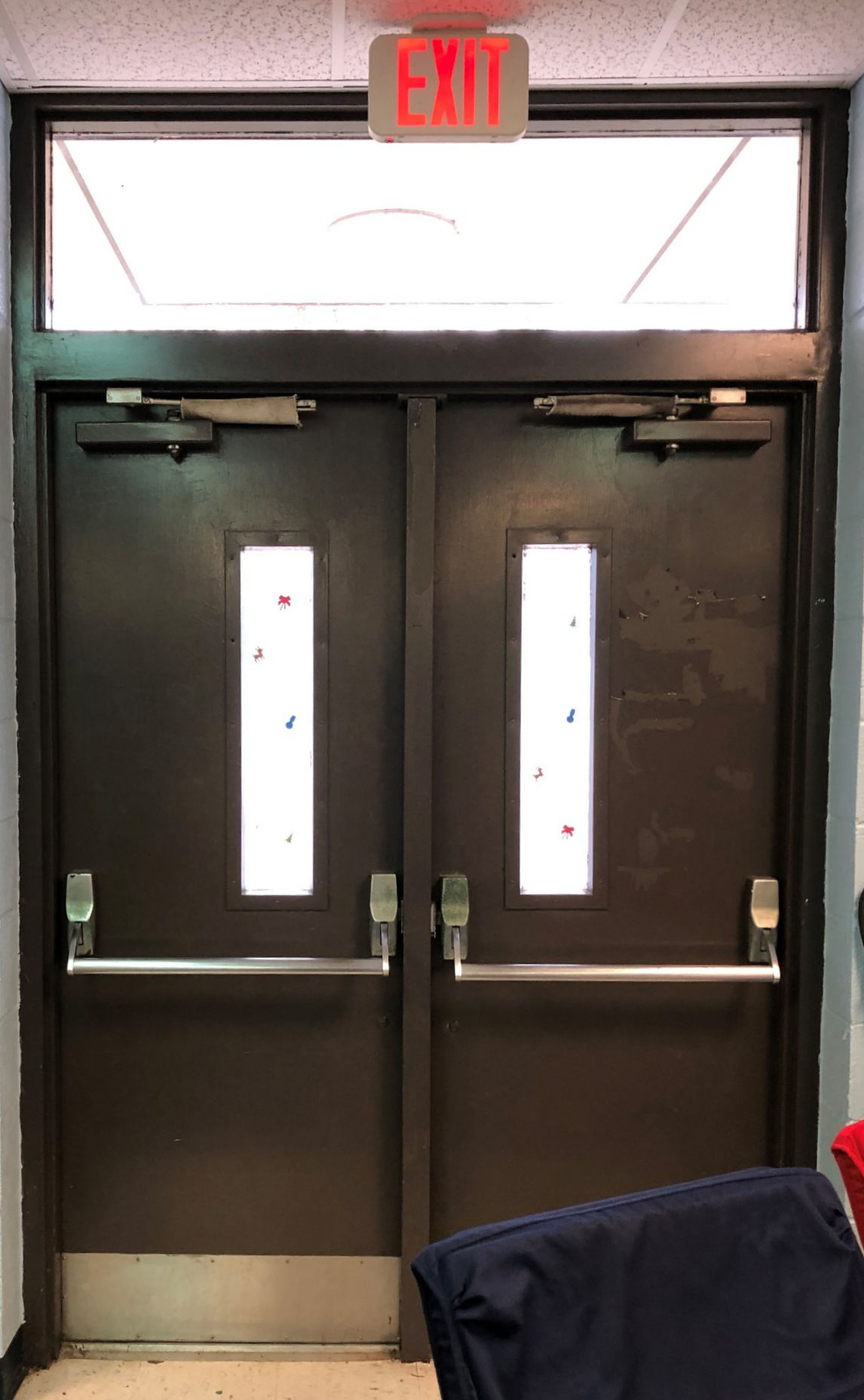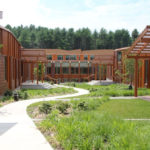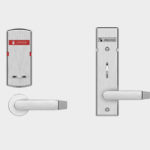 Normally when I return from holiday break I feel re-energized, re-organized, and ready to rumble. Today, I’m trying to psyche myself up for a new year full of promise, but I’m getting a bit of a slow start.
Normally when I return from holiday break I feel re-energized, re-organized, and ready to rumble. Today, I’m trying to psyche myself up for a new year full of promise, but I’m getting a bit of a slow start.
This photo points to one of the issues that I’m struggling with – school security. For almost 10 years, school security and safety have been a main focus area of mine – there are 545 posts on iDigHardware that include the word “school.” I have collaborated with dozens of experts on the topic of school safety – together we have written articles, taught classes, participated in workshops, conducted research, affected legislation, strengthened code requirements, documented best practices, and more.
I received the photo this morning – it was taken in an elementary school. The school was full of students at the time, and there wasn’t an active shooter drill in progress. Notice that along with the panic hardware – mandated by code to facilitate free egress for large numbers of building occupants during an emergency – the doors are equipped with short pieces of fire hose, slipped over the door closer arms.
A few thoughts…
- While a piece of fire hose might provide the illusion of security, how much security does this method actually provide? Which will fail first? The fire hose? The closer arm? The screws for the closer body or shoe? It’s hard to know for sure but proper latching hardware, whether it’s panic hardware or a lockset, will withstand much more force than the fire hose or some of the other retrofit “security” methods. Door hardware is tested to industry standards, to help ensure that it will perform as designed – for both security and for egress.
- Some proponents of classroom barricade devices have stated that because the retrofit devices are only installed during active shooter events and drills, the effects on egress and accessibility do not need to be considered – there is the belief that “security trumps egress” (as well as fire, accessibility, etc.) during a school shooting. In reality, the ability to evacuate is crucial during such an event, AND – the photo clearly demonstrates that these unsafe security methods are deployed at other times. The doors in the photo may have had the fire hoses installed for an extended period of time.
- These doors are not usable except by someone who a) knows that the pieces of fire hose are there, and b) can reach them and remove them. This violates the code requirements for the doors to unlatch with one motion, with releasing hardware that is mounted between 34 inches and 48 inches above the floor, with no tight grasping, pinching, or twisting of the wrist, and with no key, tool, special knowledge or effort. Current codes also require authorized access from the outside, with a key, credential, or other approved means. These doors do not comply with the building codes, fire codes, or accessibility standards, and this attempt to add security puts the school at risk of liability associated with unintended consequences.
I hope 2022 will be the year that the experts are heard and their advice followed, with decision-makers choosing proven security products rather than untested methods that don’t comply with the codes established over 100+ years. Sadly, I predict that the day will come when a barricade device will result in tragedy – either because it is used by an active shooter to trap people, or because it delays evacuation or access by emergency responders. There have already been several fatal school shootings where doors where barricaded doors prevented law enforcement from entering the secured space, and at least one fatal school shooting where the shooter (a student), initiated the lockdown procedures to prevent school staff from entering the classroom.
Let’s continue to work proactively on this issue – the website of the Partner Alliance for Safer Schools (PASS) is a great place to start! I’m happy to answer any questions or point you to further information, so feel free to leave a comment below if there’s something you need help with.
What are you seeing out in the field? What other resources would be helpful?
You need to login or register to bookmark/favorite this content.










Happy new year.
I saw a social media posting (don’t recall where) in the last several weeks which mentioned non-code-compliant door restraint devices in a very positive light. There had been a shooting incident in the school, the devices had been used, and they were touted as saving student lives. I don’t recall if the funding for the devices had been from a parent group or from the school district, but it seemed like other schools in the district either had them too, or were going to be outfitted. with such.
That’s the kind of “evidence” that the barricade people will tout. The battle for sanity regarding door controls is uphill.
Hi Joel –
Yes, the barricade devices that were in use at Oxford High School got a lot of great publicity, as parents “thanked” the manufacturer for saving their children’s lives. But without a detailed report of the incident, it’s too early to say whether the devices even played a role. Did the classroom doors have locks? Did the furniture barricades (based on the school’s ALICE training) prevent access to the classrooms? Did the shooter attempt to enter classrooms equipped with barricade devices? The outcome could have been much different if the shooter had used a barricade device to secure an area and take hostages.
In other school shootings I have not seen manufacturers of security equipment taking credit for saving lives, although locks, doors, video cameras, panic alarms, and other security measures have played a part – not to mention emergency plans, school staff, and emergency responders.
– Lori
Happy New Year Lori,
You question in your blog above that you wonder which would fail first, the hose or the closer arm. Then you state “proper latching hardware, whether it’s panic hardware or a lockset, will withstand much more force than the fire hose or some of the other retrofit “security” methods. Door hardware is tested to industry standards, so we know how it will perform – for both security and for egress.”
I follow a lot of your posts and articles about school safety and security as well as many of the others in circulation today as an advocate for proper hardware in schools for security. My question is, Would it be advantageous to publish the forces that the hardware has endured during the tests verses the same information that has been tested for the barricade devices (if any exists)? And if none exists, do you think that the hardware manufacturers being challenged (ie. in the above circumstance, the closer) ought to do some testing themselves to show the failure differences? MAYBE if we put some verified data out there to show that the hardware is capable of providing better security than the barricades, it will aide in our fight.
If you think any of this info would help, who do you think we should be talking to to get this data published?
Paul
Great minds think alike, Paul! 🙂
I am hoping to arrange a test of the fire hose “security” method – I was just talking to one of our engineers about it this morning. We have a high-tech lab and all of the equipment. I also emailed one of my firefighter friends to get some pieces of fire hose. Fingers crossed that I can make it happen – I think it would be eye-opening.
The data already exists for locksets – at least the minimum test data. For example, the BHMA standard for mortise locks – A156.13 – includes a bolt strength test, where the latchbolt and deadbolt (if included) are each independently tested to ensure that all grades of mortise locks will withstand a force of at least 1,200 lbf for the latch and 1,350 lbf for the deadbolt. Locks may withstand more force than that if tested to the point of failure.
– Lori
Lori: Just want to reiterate how much I enjoy your posts. The fire hose attached to the closer arm will not affect entirely the opening of the door – opening will perhaps happen to some extent. Closing may be problematic. The fire hose is a pliable product that requires multiple actions to make non rigid. This is a poor deterrent and a safety hazard.
Check out this photo, David:
https://idighardware.com/2019/01/ww-fire-hose-security-revisited/
A fire hose can’t even keep the door closed against the pressure created by a herd of second-graders!
– Lori